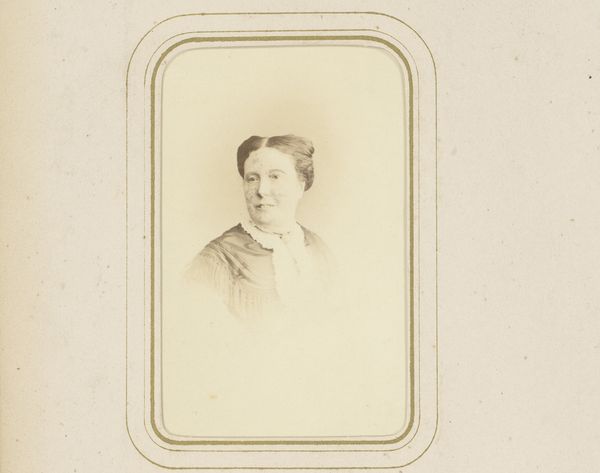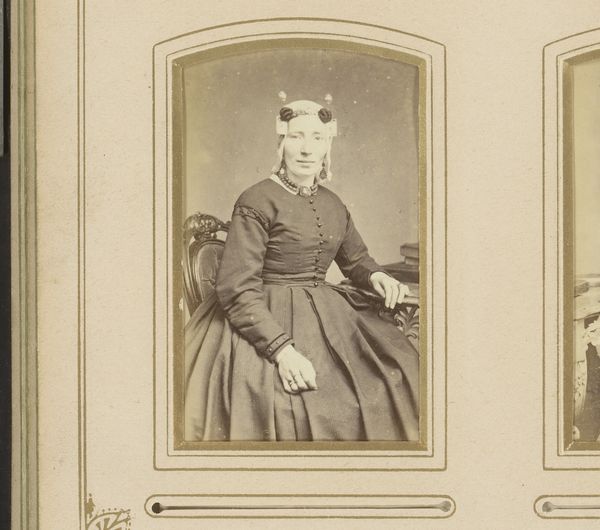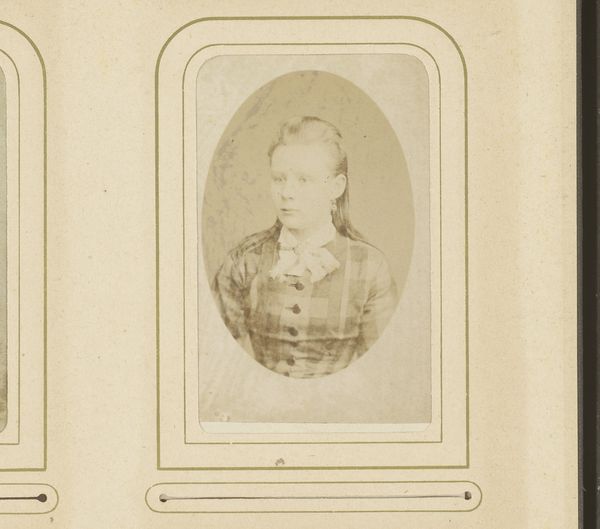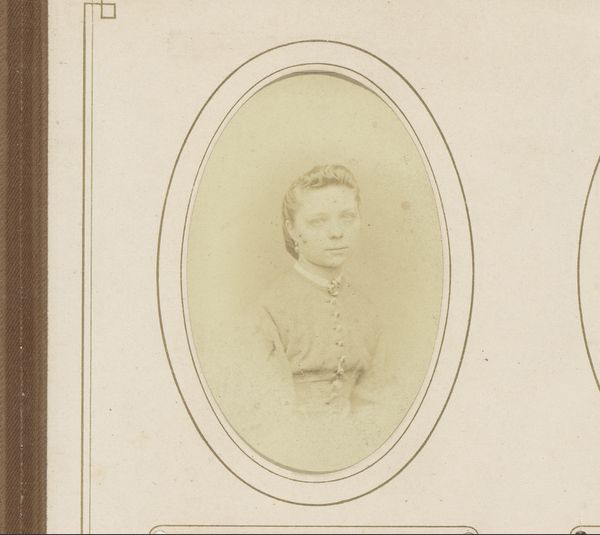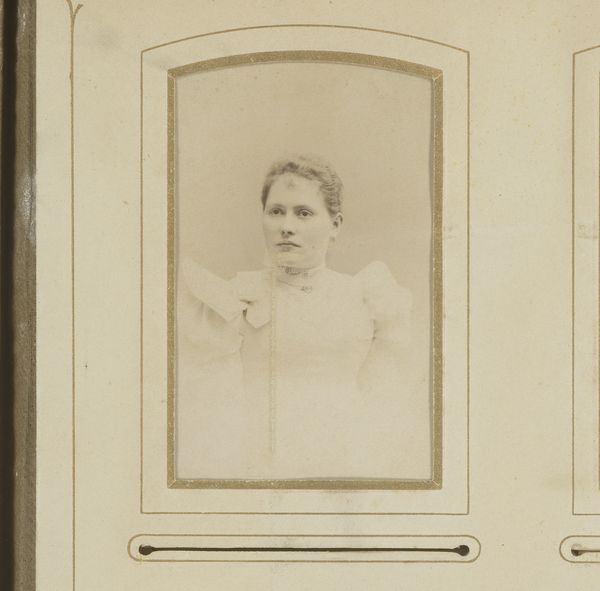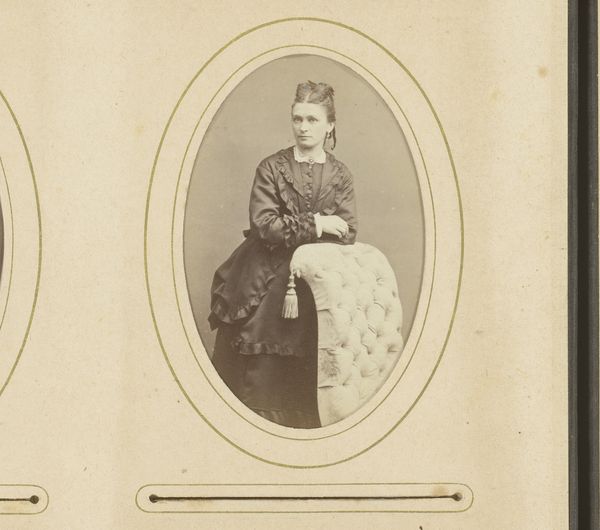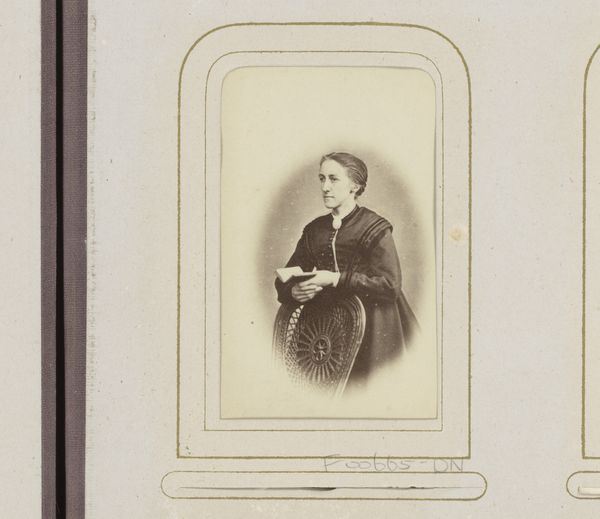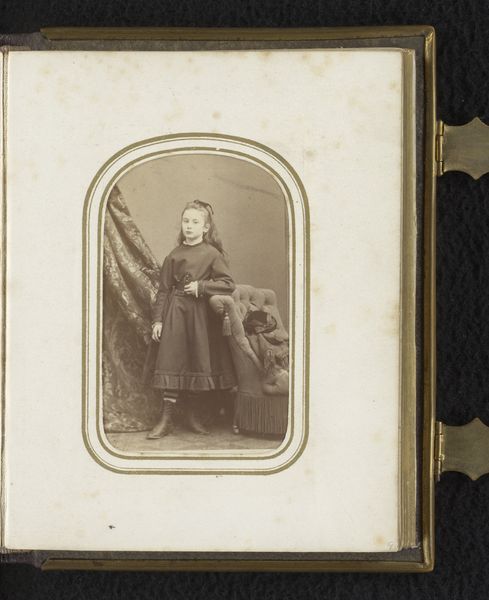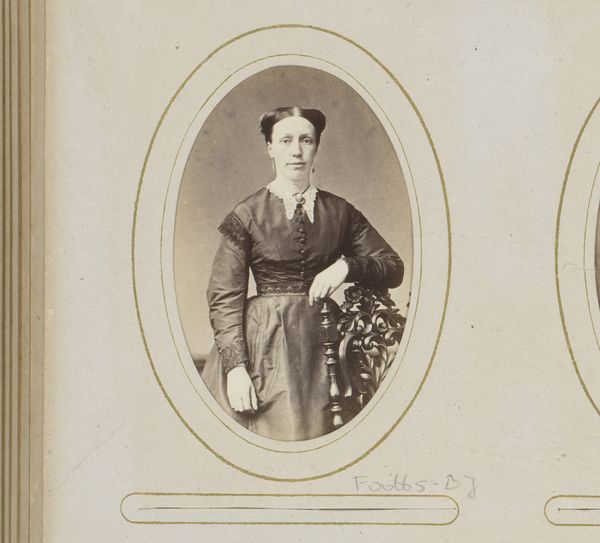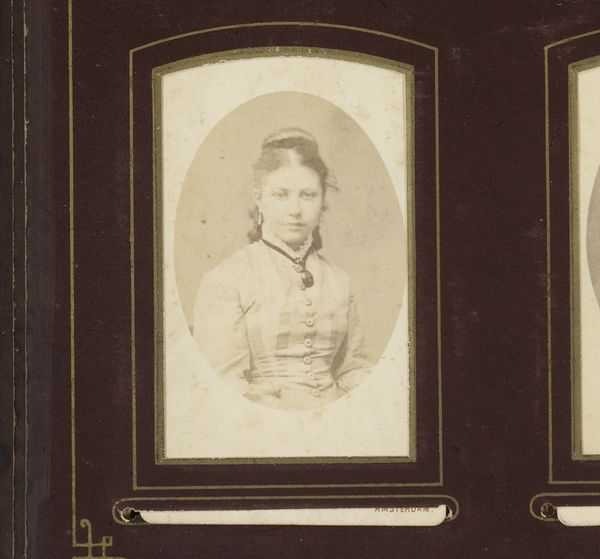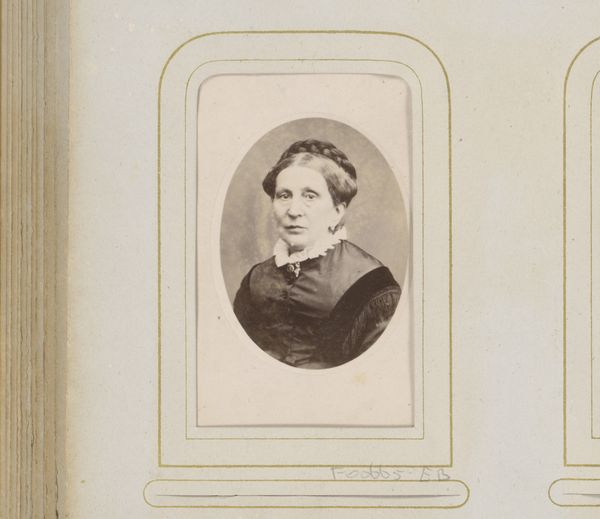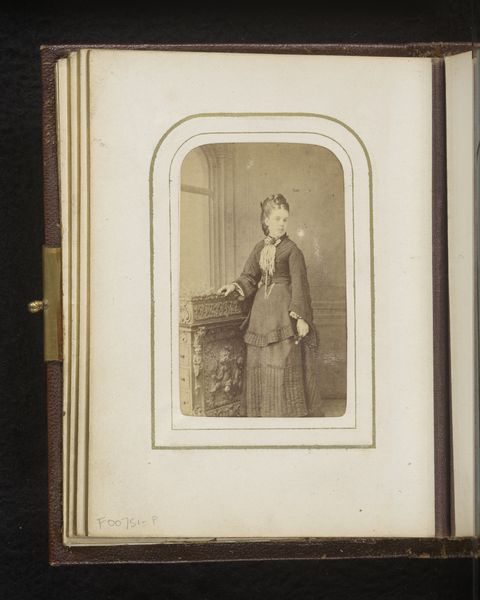
Dimensions: height 83 mm, width 51 mm
Copyright: Rijks Museum: Open Domain
Editor: Here we have Hendrik van der Worp’s "Portrait of a Seated Old Woman with White Cap" from 1867, a gelatin silver print. It’s such an intimate, almost melancholic image. What stands out to you when you look at this portrait? Curator: Well, considering the production, let’s think about the materials. A gelatin silver print involved a specific process: coating paper with light-sensitive silver halides suspended in gelatin. This wasn’t just about capturing an image; it was about industrial processes transforming raw materials into objects of cultural and personal value. Think about the sitter: the labor involved in producing and maintaining her clothing - every stitch and ruffle. The photographic process flattens this labor, making it both visible and abstract. Editor: That’s a perspective I hadn’t considered. So you're saying the value lies not just in the final image, but the material journey? Curator: Precisely! This image exists because of advancements in chemistry and manufacturing. Also consider who this image was *for*. Was it a commercial transaction, a personal memento? Photography was rapidly becoming more accessible, impacting how people recorded and remembered. How does the very act of *photographing* someone – turning them into a commodity, an object – intersect with notions of memory and sentimentality here? Editor: So, it’s about consumption, too - how the image functions within a social and economic context. Curator: Exactly. This isn't simply a portrait; it’s evidence of complex industrial and social relations at play in 19th century Netherlands. Every detail – the dress, the cap, even the pose – carries that weight. Editor: I never thought about portraiture like that before. It is much more than meets the eye! Curator: Indeed, seeing the making of an image allows one to see the complex processes of how we consume them.
Comments
No comments
Be the first to comment and join the conversation on the ultimate creative platform.
